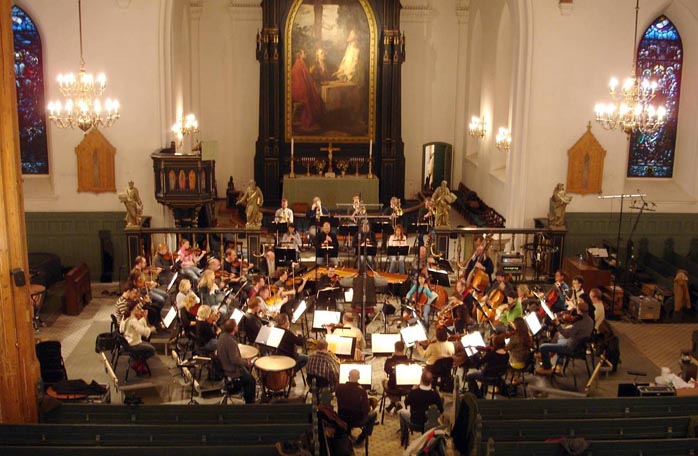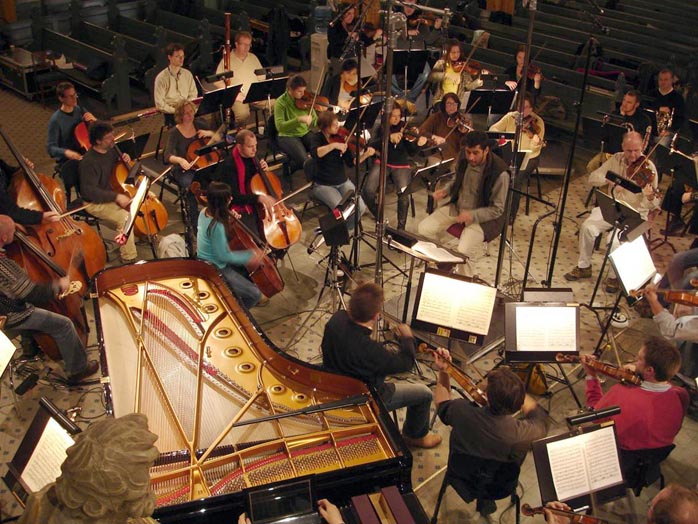 |
I have to admit upfront that my feelings are very split when it comes to this re-performance of Grieg piano works by Percy Grainger and Grieg himself.
On the one hand, Grainger’s interpretation of the piano concerto is far from conventional and opened my ears to unusual phrasing and rhythm changes that I was not accustomed to from Stephen Kovacevich, my current reference. Grainger’s read is definitely less lyrical and romantic and instead far more contrasted and percussive in many ways.
Rolf Gupta and the Kristiansand Symfoniorkester are also doing a decent job, perhaps not as finely articulated and diverse as the BBC Symphonic Orchestra under Sir Colin Davis but honorable nonetheless.
So what’s not to love?
|
 |
Let me start by saying that I struggle with the sound of period pianofortes, the dynamic constraints and lack of extension of those designs. This pianola re-creation—although not as restricted as an 1800’s pianoforte, probably thanks to the modern Steinway it is attached to—reminded me more often than not of those older designs. For a composition of such magnitude, dynamic range and explosive character, I was left wanting more than once regarding the true capabilities of the instrument. At times I also felt that the technology was reaching its limit when it came to speed and ability to keep up with the orchestra, not to mention treble harmonics that were quite shy of what I am used to hearing from a modern piano. I originally guessed those limitations did not come from the playback instrument but rather from the recording technique.
But David Kan’s thorough enquiry revealed that Grainger also used a technique called “breaking of hands” to thin out harmonics as well as instructed the conductor to omit certain doubling voices in the orchestra (the bassoon for example is sometimes omitted when the French Horns are playing). After the novelty of Grainger’s interpretation wore off, this harmonic thinning and dynamic restriction started spoiling my enjoyment more and more.
Obviously hearing Grieg himself on his works for piano solo is fascinating but again, I had a hard time completely detaching myself from what I felt were some of the technical limitations of the instrument. It is certainly not as profound as with Grainger’s rendition of the piano concerto but present nonetheless. I found this particularly true on the otherwise passionate Sonata for Piano and Violin. Again I felt a restrain, a lack of freedom in the dynamics and articulation that rubbed out some of the fire for me.
Am I happy this recording exists? Absolutely. It offers perspectives and insights into Grieg and Grainger that we would not otherwise have and I’ll take this performance with its limitations any day over never hearing what those giants had to say. Yet I won’t make this disc my reference. It is an enlightening hour for sure, just not my favorite one. For people interested in the technology itself, this disc offers a lot of information and presents three different instruments on the same recording, something that had never been done before to delight pianola fans.
|
 |
When it comes to recording quality, 2L’s work is exemplary as usual. On this disc, I have a slight preference for SACD over 24/192 FLAC just because it sounds more open and preserves upper harmonics slightly better. But I am splitting hairs, both are technically fully accomplished. Soundstaging width and depth are spectacular, with again a very slight advantage for the stereo SACD. |
|
  |
 |
|